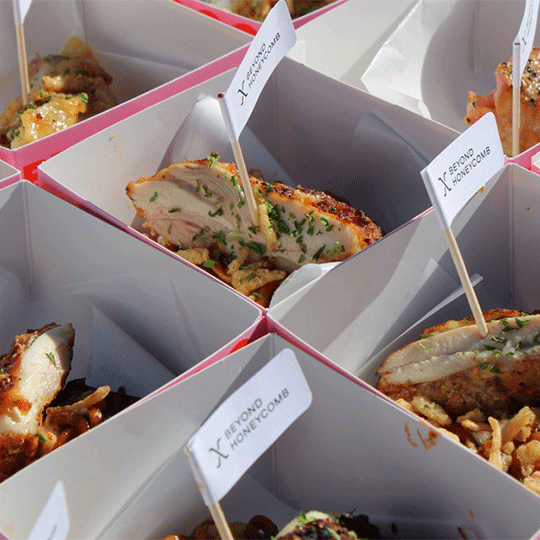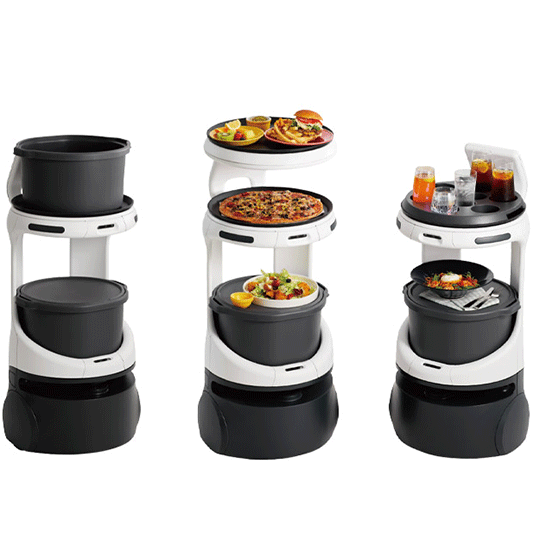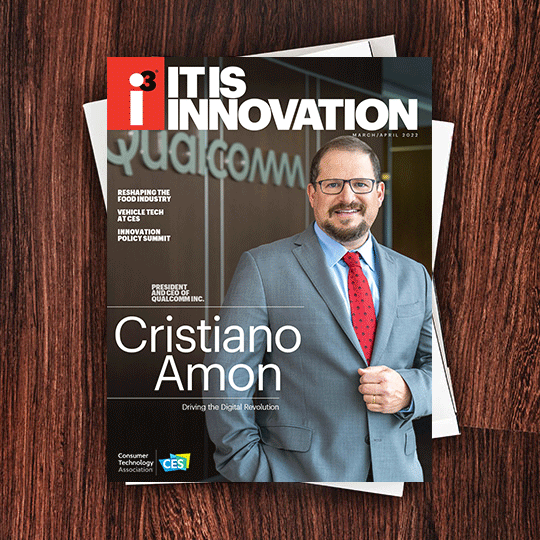
According to FoodTech Data Navigator, food and agriculture startups attracted over $22 billion in investments in 2021. The industry monitoring report from London-based Forward Fooding Ltd. identified more than 3,500 AgriFoodTech companies worldwide underscoring the attention going into these diverse categories.
“People are jumping from other technologies into food because it can make such a great impact,” observes Michael Wolf, CEO of The Spoon, a Seattle research firm. Wolf, who moderated several food tech conference sessions during CES 2022 including on the future of meat, cites one example of the integration of technology and food. “At every step of the food creation, preparation and delivery process, robots are becoming more and more involved,” he says.
The onslaught of food tech proposals — some of them subject to food and agriculture regulation — raise the specter of policies that can affect their development for health as well as economic impact. At a CES 2022 session on “Food Innovation,” Vonnie Estes, vice president of innovation for the International Fresh Produce Association, urged policy makers to accelerate their “pre-competitive evaluations” so that startups don’t repeat each other’s work. She cited the value of coordination among federal labs on applications such as robotics, software design for harvesting or bio-controls in farm projects.
Suma Reddy, co-founder and CEO at Future Acres, summarized the challenge of modern agribusiness — especially in developing and poor nations — as a question of “How do we build military-grade equipment at ag-tech prices?” She characterized AI and robotics as “technologies to modernize the farm system,” which is essential as another two billion people will be born in coming decades and food availability must meet nutritional needs.
Consistency as well as Efficiency
Digging deeper into the expanding food chain, CES 2022 sessions and exhibits demonstrated the range of factors affecting industries. For example, “robot chefs” — especially in mass production environments — offer an opportunity for restaurant operators to create “dish consistency” in addition to rapid turn-around.
Beyond Honeycomb, a Seoul company that demonstrated its AI-driven kitchen robot at CES 2022, sees the robot chef as a solution to the labor shortage in the restaurant industry, which cannot find enough line cooks or servers, as well as the need for consistency in food quality.
The company’s marketing leader Kiara Low Seo Hee, emphasized its AI kitchen creator “reproduces the texture and taste of the chef’s dish at the molecular level.” To accomplish that, the intelligence and sensor capture and digitize the texture and taste of the original chef’s preparation while he or she cooks the menu item.
“We developed our own AI model that digitizes and analyzes the food taste and texture. We have the know-how from more than seven thousand cooking tests and two-hundred thousand data sets,” she explains.
Subsequently the AI learns the necessary preparation skills, which usually takes about 48 hours, Low says. “Once trained, the automated kitchen robot reproduces the dish with the exact quality the original chef intended,” she adds.
“We are redefining what a ‘chef’ does. Chefs are the artists. Instead of spending a lot of time doing the labor job, chefs should focus more on creating their own ‘tastes,’” Low says. “We are focusing on creating a new dining platform where you can have chef-quality daily meals anytime, anywhere at a low price.”
Among Honeycomb’s business plans is to “share the profit with the chefs who provide the recipes.” At CES 2022, Honeycomb served more than 800 auto-chef meals on the first day and 1,000 meals on the second and third days of the show at its exhibit space in central hall. “We sold out our meals within just four hours on the final day,” she adds.
Plant-Based Foods in New Realms
Anne Palermo, CEO and co-founder of Aqua Cultured Foods, is passionate about the need for “more sustainable ways to feed a growing population.” Her company is focused on seafood and fermentation “because it’s extremely resource-efficient, affordable and delivers high nutritional values.”
Palermo acknowledges that seafood may not be atop most Americans’ dining preferences, but said the global demand for seafood is expected to increase by 30% in coming years. “The seafood supply chain has created environmental catastrophes in world oceans including ecosystem damage, plastic waste and unintended bycatch,” she explains, noting that “80% to 90% of wild fisheries are overfished, leaving 170 countries with unmet demand for seafood.”
Aqua Cultured Foods has “refined the science of fermentation for fish and shellfish analogs,” Palermo explains. She says her company is the only fermentation firm dedicated to alt-seafood, and the only alt-seafood company using fermentation. Alt-seafood grew by 23% in 2020 and is expected to hit $1.3 billion by decade’s end, Palermo adds.
“The biggest challenge was achieving a realistic texture. Texture is extremely important in seafood alternatives and the bar is much higher than for a burger or a chicken nugget.” She contends that the company’s “completely new methods” have achieved “the delicate textures of a whole-cut filet, shrimp, scallops and calamari.”
“It was very exciting to get it perfect,” she says, adding that the success has come just as Aqua Cultured is transitioning from an R&D company to commercialization.
Nature’s Fynd, a 10-year-old firm, develops microbe-based proteins for meat and dairy substitutes and also uses fermentation technology. It seeks to develop systems “to feed ourselves in ways that are gentler on the planet,” CMO Karuna Rawal explains.
The company grows its own “Fy,” a fungi-based protein developed from a fungus first identified in geothermal springs in Yellowstone National Park (and the source for the spelling of its brand). At its technology-rich 35,000 square foot manufacturing facility on Chicago’s south side — ironically located in the old Union Stockyards — Nature’s Fynd uses “breakthrough fermentation technology that grows a new-to-the-world complete, vegan protein that can be made into delicious, sustainable meatless and dairy-free foods,” Rawal says.
The system uses 99% less land and water and only emits 6% of the greenhouse gases compared to conventional beef processing, she adds.
The factory is equipped with propriety robotics to fill, transport and harvest the Fy trays in a “highly efficient system that is scalable globally,” Rawal explains. “Our fermentation technology can grow protein in a matter of days without the need for rain, sun or soil.”
“We are using robotics and automatic guided vehicle systems in our manufacturing facility,” she says, modeled on the large fulfillment warehouses of e-commerce retailers. Nature’s Fynd plans “to build our capability in the automation and robotics area to optimize our current manufacturing process as well as explore new emerging technologies,” Rawal says. She envisions incorporation of logistics and supply chain tools such as Internet-of-Things-enabled refrigerated trucks “that can create better temperature management to reduce spoilage and waste for refrigerated products.”

Taste Matters
Elsewhere on the plant-based menu, vegan cheeses have been around for over 50 years. What’s been missing “is lack of taste and nutrition,” says Andrew Yu, president and CEO of Armored Fresh of McLean, VA, that is developing plant-based dairy products and makes vegan cheese.
Yu cites research that about 35% of those who identify as vegan for health reasons, and about 65% of those who identify as vegan for environmental and animal rights reasons, don’t buy vegan cheese or dairy because it doesn’t taste good. There are also frequent complaints that vegan cheese lacks the nutrition value of conventional dairy products, he adds.
Yu believes that for mass adoption, food tech entrepreneurs must use technology and science to create products that are appealing, user friendly, deliver on values, and “in our case delicious.” At CES 2022, Yu’s “number one objective was to get our cheese sampled by the general public.” About 500 people tasted the company’s vegan almond milk cheese reporting a “100% positive response to the taste of our cheese,” adding most said “This is really tasty cheese.”
“Alternative protein is here to stay,” Yu says. “Consumers are getting smarter and savvier about what they are consuming and the impact it’s having on them and the world around them. I see the market in every facet of food technology going in a very positive direction.”
Down on the Farm
The legacy farming business is also ramping up its production process.
Estes acknowledges that food production — even the new smart agribusiness — is a “messy business” that carries on through rain, wind, mud and in temperatures from 10 to 100. More, harvesting — which is increasingly automated — still faces challenges in gathering soft produce (such as delicate berries) and sorting them in the field.
“I am most excited about harvest-aid robots,” Estes says. “These robots augment human work, are affordable, and are available now. They can do things like run up and down the rows of table grape pickers to carry picked grapes so workers don’t have to leave their jobs. They will also be used as platforms to gather more data.” She also cites the development of smart weeders and thinners to help in the field.
“Using computer vision and AI, we are able to be much smarter and cleaner about weed control and crop thinning,” Estes explains, citing that AI can spot a weed in the field and “zap it with a small amount of safer herbicide or a laser.”
“Robots and automation will have continued importance throughout the produce supply chain in helping automate the dirty and dangerous jobs,” she adds.
At CES 2022, Estes participated in conference sessions on innovation and on handling “food waste,” another major issue at the end of the food supply chain. “We saw big themes at CES that are very familiar to our industry,” Estes says, emphasizing the importance to agribusiness for “keeping pace with technology” to achieve the same benefits as other industries that have adopted advanced tech in their operations.
“There are many technologies available such as AI, robotics, computer vision, bioengineering that if applied to the food system, can make a real impact on saving and feeding the planet, probably more quickly than other product categories.”
Palermo of Aqua Cultured Foods summarized the outlook of many speakers and exhibitors at CES 2022. “Food tech has a place at the table — if you’ll pardon the expression!” she said.

At Home or To Go
The pandemic brought into focus the long-simmering issue of the role of the kitchen. At a CES 2022 conference session on “Kitchen 2030,” experts looked at the most expensive room in most homes and how it will be used.
Some consumers see cooking as a chore, while others relish kitchen time as a creative experience, the panelists agreed. They concurred that most people want “more flavorful food” and want to discover diverse cuisines. But consumers also want convenience and food that supports personal wellness, whether it’s homemade or ordered from an outside source.
Against that complex matrix of options, kitchen technology is changing dramatically.
Dr. Dochul Choi, senior vice president at Samsung Electronics Inc., (whose role oversees home appliances) pointed out that many homes — especially in space-constrained Asian apartments — no longer have a kitchen. Families rely on “centralized cooking versus individual cooking,” he said, noting that the latter is more wasteful. Choi also said there is a need for interoperable standards in kitchen appliances. “Standards are important because you don’t want consumers to have 20 apps to control kitchen plans.”
Another way to look at future kitchens focuses on whether they will be used for guided (recipe) cooking or for autonomous robotic food preparation. Khalid Aboujassoum, founder and CEO at Else Labs reminded appliance developers they should devise cooking tools that may have to handle very different approaches to food preparation. “The hardware has to live up to the software,” he said.
The tradition of the kitchen as a family central gathering place may change. The panel agreed, that “breaking old habits is one of the most challenging barriers” of the new food tech evolution.

Robots Everywhere
The food industry exemplifies the versatility of robots and the vast differences in how robots can be used, from kitchen preparation to delivery bots.
At a CES 2022 session called, “The Food Robot Future,” Clayton Wood, CEO of Picnic, a Seattle pizza production system, emphasized that food automation needs to work at a “restaurant scale.” Andy Lin, founder and CEO of Yo-Kai Express Inc., cited the opportunities for customized vending machines that can create fresh dishes at niche locations, such as for the overnight staff at airports (among his first clients) or hospitals. Lin characterized the role of food prep robots as akin to ridesharing, “You can hail a meal.”
As the panel began, Servi, a Bear Robotics programmable delivery robot, circulated on stage, bringing bottles of water and snacks to the panelists. Juan Higueros, co-founder and COO at the San Francisco firm, explained that the semi-humanoid server is being deployed in chain restaurants such as Denny’s and Chili’s which have had staffing problems, and at institutions such as senior living community dining rooms, which also face special health/safety conditions.

I3, the flagship magazine from the Consumer Technology Association (CTA)®, focuses on innovation in technology, policy and business as well as the entrepreneurs, industry leaders and startups that grow the consumer technology industry. Subscriptions to i3 are available free to qualified participants in the consumer electronics industry.